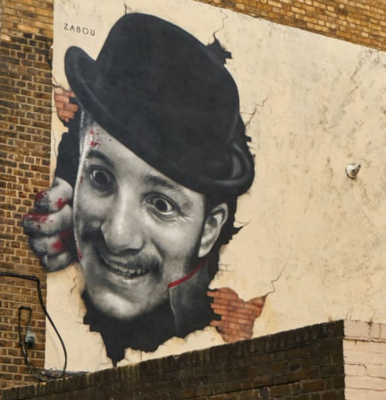My fuller review of The Five:
Hallie Rubenhold’s The Five is probably the most important book in the field of Ripperology in recent years.
Rather than some further, near pointless, final solution, it gives up sensationalism for hard graft and scholarly work.
It presents the canonical five women for the first time ever in the level of detail that was reserved previously for suspects.
It is reminiscent of the methodical, thoughtful and meticulous work of Philip Sugden, and sets a new standard for empathetic, but never sentimental, historical detective work.
Rubenhold manages at once to provide a deep context and historical placement for each of the women, and then weaves the complex fabric of society around each, with their differing backgrounds and series of developments that brought them to Whitechapel, and ultimately to their utterly undeserved ends.
The author does not go into details about their deaths, only to document their lives in vivid detail, right up to their final moments where possible, and it is here that some true insights for the field come about.
Rubenhold comprehensively illustrates how the police forces of London at the time were overwhelmingly biased against the poor and destitute women of the East End, to the point where each one found homeless or drunk was immediately assumed to be at least a casual, if not fully professional, prostitute.
This was such an issue that a legal case was brought and won by a woman, prompting the Met Police Chief Sir Charles Warren to issue instruction on the matter. This was in 1887. Suffice to say, Rubehold makes a fairly watertight case for police bias in the field.
Secondly, she comprehensively proves that for both Annie Chapman and Catherine Eddowes, there is no evidence at all to support, and indeed much more to refute, the notion that they engaged in even casual soliciting. And there, for me, is the major impact from her work for the field.
Eyewitness testimony has always been an issue in the Ripper case. However, the best sightings have generally been believed to be that of Annie Chapman on the street in front of 29 Hanbury Street, and Catherin Eddowes in the passage leading to Mitre Square. Both seemed to suggest soliciting on the part of the two women, which was assumed to be a john who may or may not have been JTR in both cases.
In fact, the Eddowes sighting is the basis for the entire JTR in the asylum theory, complete with later eyewitness identification.
However, Rubenhold, in both cases, blows the idea out of the water — neither woman was given to casual soliciting. Therefore, we must question whether it was Annie who was stood with her back to the wall as a stranger said “Will you?”
Similarly, was it really Catherine Eddowes that Joseph Lawende saw by Church Passage, with her hand playfully on the chest of a fair complexioned man?
Lawende only identified Eddowes by the clothes she wore, post mortem.
If, as Rubenhold’s work now sets out, neither Annie nor Catherine were given to soliciting, then it must be assumed that JTR managed to get them to the respective secluded places to carry out his crimes.
It is now very reasonable to argue that both Annie and Catherine may have been sleeping rough and were not the women seen by either Elizabeth Long, or Joseph Lawende. Were their two murders just JTR’s opportunistic luck? Did he, in fact, throttle them on the ground, and then use the knife?
Rubenhold’s work is solid enough to reassess these two cases in particular, and re-examine their circumstances beyond the traditional narrative of soliciting the wrong man.
The Five brings vividly to life the stories of these women, who were mothers, daughters, sisters and wives. They lived in harsh times and suffered even harsher conditions before their awful, utterly undeserved deaths. But each one too once had happy times and joys, though short lived. This book reminds us that behind the grisly fascination with the murderer, are real people murdered, and real families left behind. That in itself is enough to make this a great book. But to take the study of this case a significant step further in terms of our overall understanding, is an outstanding achievement.




